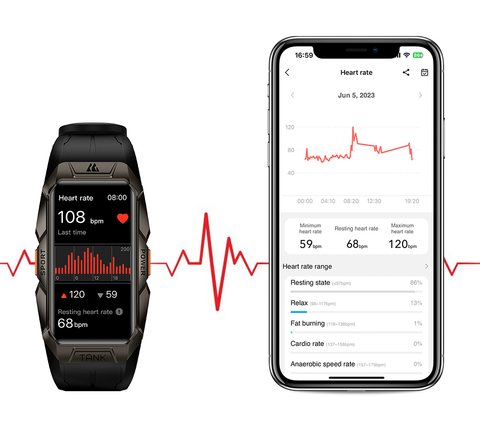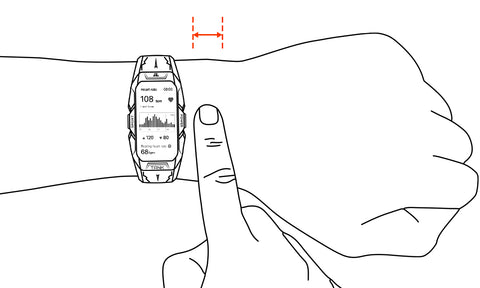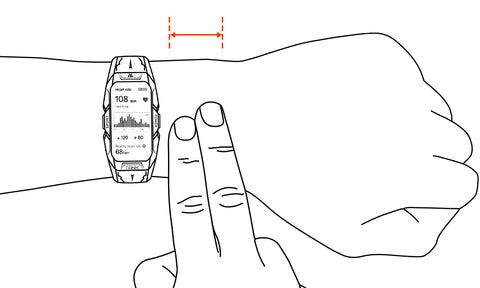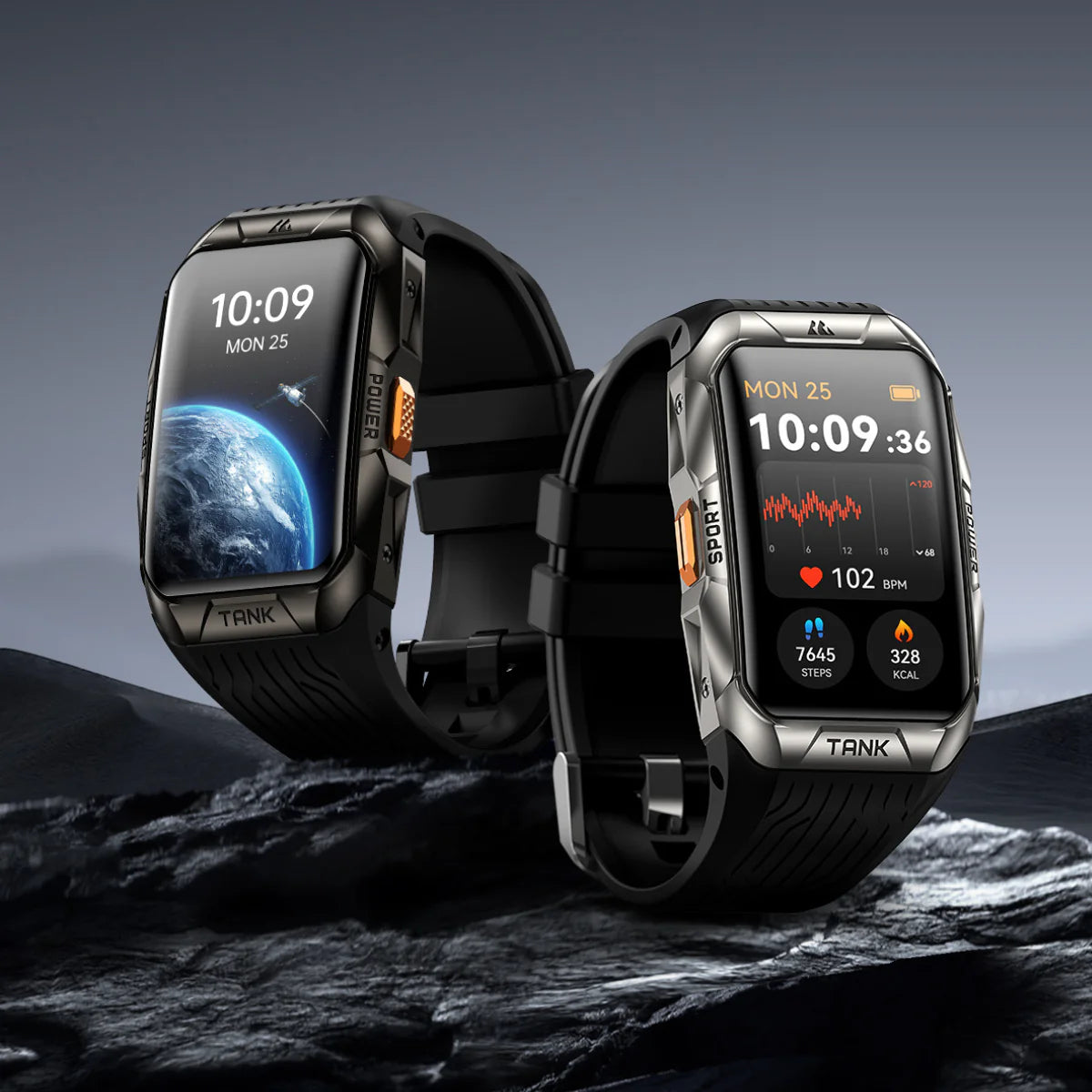Wrist or optical heart rate technology, also known as WHR or OHR in the industry, tracks your heart rate through the device’s LEDs that measure your blood flow in your wrist. The results enable you to view your heart rate data on a daily basis or during a workout.
We offer WHR in the following KOSPET smartwatch/smart band models:
By employing such technology in our smart wearables, KOSPET smartwatches (and smart band) feature precision heart rate monitoring, Nonetheless, the accuracy of optical heart rate measurement is determined by many factors.
How does optical heart rate measurement work?
Optical heart rate devices utilize light to detect and measure the amount of blood flowing through your veins and tissues. According to the volume of blood pumped, whether heart rate is high or low depends on the amount of light returning to the device: the more light, the lower heart rate and vice-versa.
In other words, as the dynamics of blood circulation change, the light entering around your wrist will scatter (in a predictable fashion).

With your KOSPET smartwatch (or smart band), it is simpler and more convenient to measure your heart rare. Yet please keep in mind that the accuracy and reliability of optical heart rate measurement vary from person to person, from device to device, and may not function at all during workouts or activities of certain types.
Moreover, heart rate readings, optical or otherwise, are estimates and should be used only for reference. KOSPET smartwatches (and smart band) are not designed or intended to monitor or diagnosis diseases or other conditions.
Here are the factors that may affect the heart rate measurement:
- When working out in cool or cold temperatures, your body tend to direct the blood flow from your arms and legs towards your core, in order to maintain your body temperature, as a result of which the decrease in blood flow to the arms makes it more difficult for the sensor to measure heart rate precisely.
Therefore, if your hands are usually cold, it is recommended that you warm up prior to exercise to enhance the accuracy of heart rate readings.
- What may also influence the accuracy of sensor readings include: muscle flexion, arm movements, sports with strong vibration, cycling on bumpy, uneven terrain, etc.
- The heart rate sensor may not provide accurate readings during swimming and other water activities, since water passing under the watch/ band may impede the optical sensor’s ability to detect heart rate precisely.
The right fit for better readings – how to wear your KOSPET smartwatch/smart band as the wrist heart rate tracker?
A proper fit can help improve the precision of your heart rate readings. Try with the following tips, and test to improve the fit of your watch/band until you find your personal best fit.
For daily use:
Wear your KOSPET watch/band at least one finger above your wrist bone and ensure it stays snug on your wrist. Your watch/band should always maintain contact with your skin, in order that you can’t see the green light shinning from the sensor.

During workout:
It is crucial to wear the watch/band as high up on your wrist as possible, and to stop it from sliding down when you exercise. Put on your watch/band around two fingers above your wrist bone, while making sure the watch/band is worn evenly and properly tight against the skin, yet not too tight to cut off blood circulation.

Note: It takes time and practice to figure out the sweet spot for your wrist with a specific watch/band model. Try several times and compare the results.








Leave a comment
All comments are moderated before being published.
This site is protected by hCaptcha and the hCaptcha Privacy Policy and Terms of Service apply.